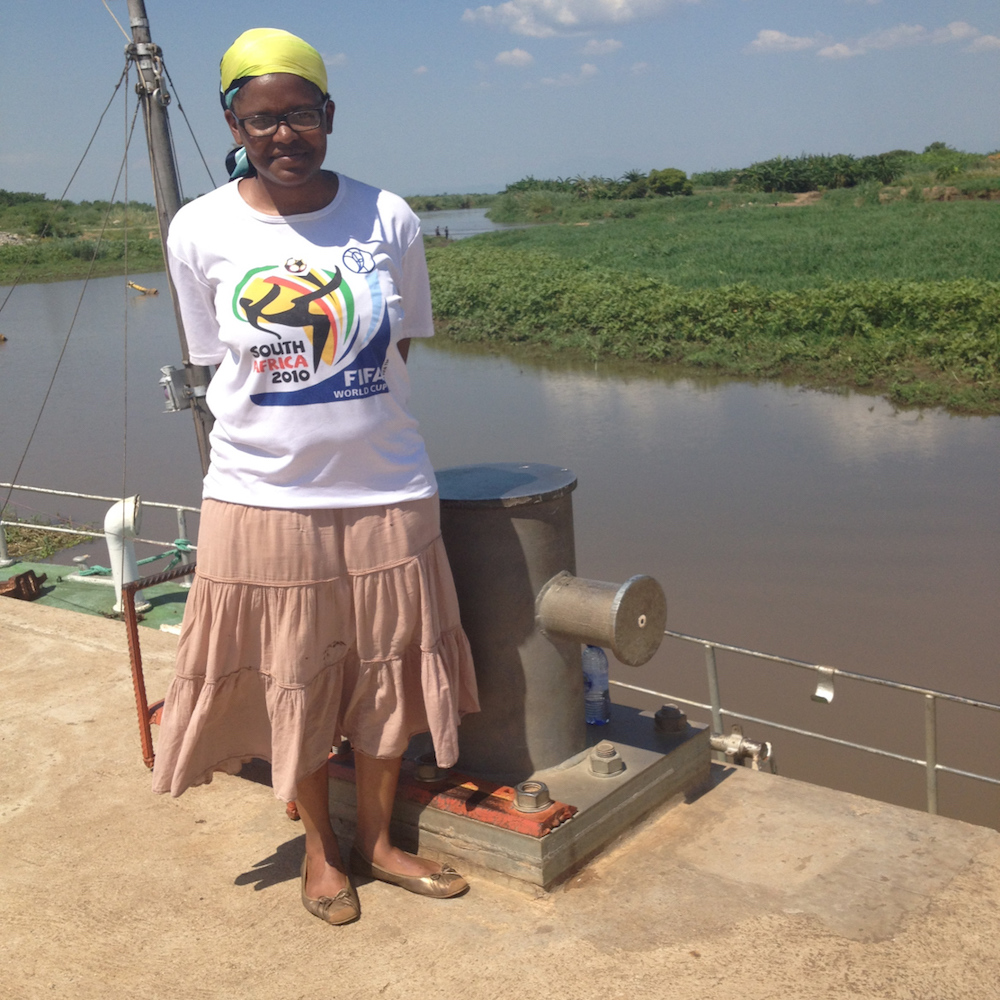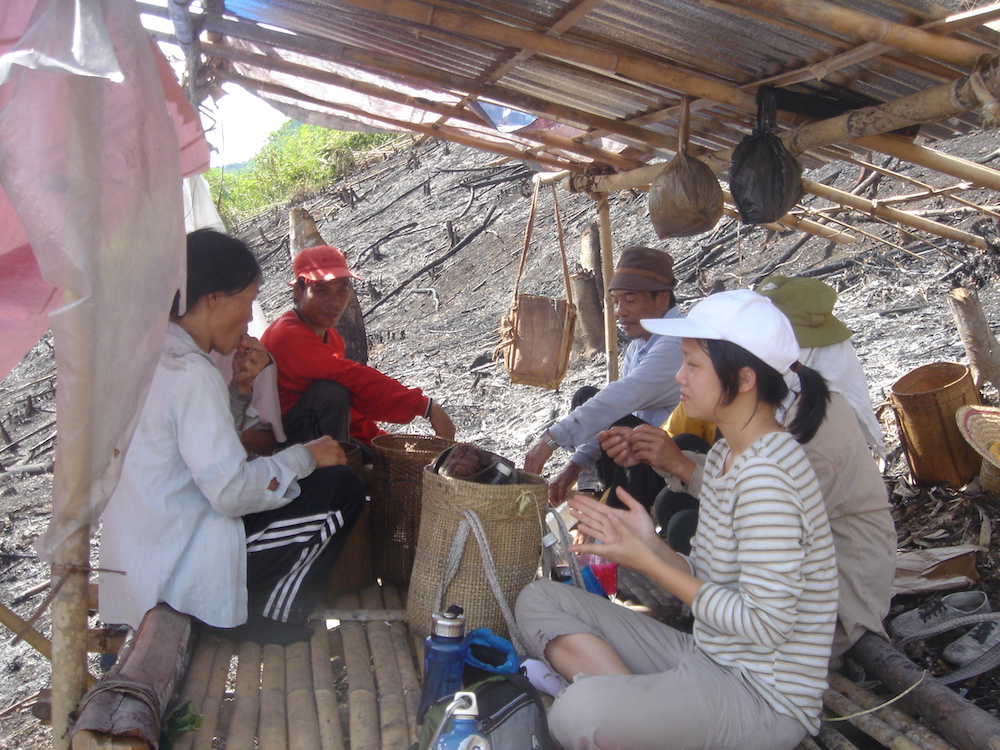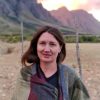Who Gets to Study Whom?

About a decade ago, Chisomo Kalinga was in a bind. The medical humanities scholar, then a graduate student at King’s College London, was looking for grants to support her research on the representation of HIV and AIDS in fiction in the United States. But no one seemed interested. “I was very dispirited that I could not seem to land funding,” Kalinga recalls.
That was to change overnight. When a funding adviser at the university mentioned in passing to Kalinga that there might be more interest in financing a project in Malawi, where her parents live, Kalinga changed course: She modified her research to compare the representation of HIV and AIDS in U.S. literature with that used in Malawi’s. “And lo and behold, the money started coming in,” she says.
This change in fortune unsettled Kalinga. Born in Malawi, Kalinga left that country at 8 months of age. She grew up in the United States. She is an American who wanted to conduct research in the U.S. But Kalinga worried that, as a Black scholar, funders wanted her to work with nonwhite and non-American communities and that they deemed Malawi, specifically, as more appropriate for her research than the U.S.
In principle, there could be many other reasons why her initial idea did not get funding. For one, certain countries—such as Malawi—have been historically understudied and therefore may be earmarked as greater research priorities for the future.
When Kalinga asked the funding adviser why the university was so keen on supporting her to study in Malawi but not in the U.S., the adviser responded that the university’s postgraduate office wanted to fund projects that were more “diverse” in their geographical focus. Kalinga supports the idea that research should be more diverse. But she still questions why she, as the only Black woman doing a Ph.D. in her department at the time, was asked to broaden her research in this way.
Kalinga’s experience speaks to an important debate taking place in academic disciplines that place human beings and cultures under the microscope. In these fields, including anthropology and sociology, questions are being raised about the power dynamics surrounding “who gets to study whom.” In anthropology, the questions form part of a broader debate about how to make the field more inclusive of scholars from underrepresented communities and nations.
In consequence, the field has tried to amplify nontraditional voices—those from communities where, historically, anthropologists have been outsiders. “The instinct was not malicious,” says Ron Kassimir, of the Social Science Research Council (SSRC), referring to this effort. “But it developed into an unspoken idea that scholars from the developing world should study their own.”
It’s this idea that concerns Kalinga. “I have never met a white student … who was told to study their own,” she says.
This issue matters for young scholars of color like Kalinga, who feel like they are denied the freedom of scholarship enjoyed by their white counterparts. Until all researchers have that agency, some critics argue, the field will continue to suffer from a lopsided view of the world in which the dominant voices—particularly when discussing Western nations—remain those of white, Western scholars. Now, at a moment when the Black Lives Matter movement is floodlighting issues of racial disparity in the United States, in particular, these sentiments resonate all the more.
Anthropology, like many sciences, has been plagued with social and racial imbalances. The field grew out of the European colonial project and was part of an overarching effort to not only understand and describe the people Native to the regions that Europeans annexed—but also, in some cases, to dominate and exploit those people and their lands.
In his formative 1922 book Argonauts of the Western Pacific, the Polish anthropologist Bronisław Malinowski describes the fieldwork ethnographer as a go-between or mediator between the “Native” of faraway lands and “we Europeans.” Later, when the United States grew into a global power after World War II, it greatly expanded “area studies,” academic programs that would ensure a supply of American scholars who knew about regions in which U.S. influence was growing. (In fact, the U.S. made use of insights from cultural anthropology in a military context to often harmful and unethical ends during World War II, the Vietnam War, and other conflicts.)
The discipline has transformed in many ways, in part to correct course from its colonial heritage. From the 1970s onward, “area studies” have increasingly incorporated scholars from the regions under study.
Kassimir, as vice president of programs at the SSRC, which has been funding research for nearly 100 years in more than 80 countries, notes that this shift increased a “knowledge base built up by locals” rather than outsiders. In the past few decades, his organization and other funders have developed programs in these regions to study and respond to their own challenges, he adds.
“Anthropology is in a really interesting place right now,” says Danilyn Rutherford, president of the Wenner-Gren Foundation, a U.S.-based funder of anthropology research. (SAPIENS is an editorially independent publication of the Wenner-Gren Foundation.) “There’s a new generational shift. There is an awareness of the need to decolonize the field and ways of doing that.”
As a result, people from communities that have traditionally been “the studied, not the studiers” are being encouraged to participate in projects where they can be “both researchers and researched,” Rutherford explains. The hope is this shift can counteract the damaging colonial tradition of outsiders dropping in and imposing judgments on the communities they study.
But fundamental imbalances remain in the field. Black scholars are, for example, significantly underrepresented in archaeology in both the U.S. and U.K. A 2018 survey of U.S. biological anthropologists found that underrepresented individuals such as Black, Asian American, Latino, and Native American scholars made up between 8 percent and 11 percent of master’s and doctoral graduates. That same study further noted that, according to the U.S. National Science Foundation, in 2014, 71.7 percent of anthropology graduate students broadly—across all subfields—identified as “White (European American).”
A lack of diversity, in turn, ramps up the pressure that individual scholars of color feel to “study their own,” as Kalinga put it. In short, in the push to avoid studying the cultures of “others,” academics who already face systemic barriers such as implicit and explicit racism, may feel burdened by having to tailor their fields of studies in ways their white counterparts do not.
There is not a lot of data on who gets to study whom. Without concrete numbers, it’s hard to say with confidence how much ancestry, race, or country of origin correlates to area of study. And even if that data were available, it’s hard to know whether people feel constrained to a particular topic or region.
“I have never met a white student … who was told to study their own,” says scholar Chisomo Kalinga.
Still, anecdotes of lived experience abound. Deborah (a pseudonym), an East African sociology graduate who studied for her master’s in the U.K. and who did not want her real name used for fear it would harm her Ph.D. funding, says she was warned off studying Arab Spring uprisings in the Middle East by other academics.
As she puts it, “There’s a general belief by African scholars that it is very hard for people of African descent to get funding if their research focus diverges from topics closer to home.” In other words, Deborah believes African researchers are being pressured to study their own communities—or, as in Kalinga’s case, the communities that funders perceive as their “own.”
Liana Chua, a social anthropologist originally from Singapore and based at Brunel University London in the United Kingdom, recounts another facet of the challenge faced by anthropologists who are not white. Chua has encountered varied expectations of her work related to her ancestry and appearance. When she tells people that she does fieldwork in Borneo, she gets asked whether that’s where she’s from or if she has family there.
People are surprised when she says no. “I don’t think a white anthropologist would be asked the same question, even if they were choosing to study a different, predominantly white society,” Chua says.
These pressures and biases can have complex effects. When students and scholars of color are marginalized in the study of regions and communities other than their own, the whole field loses out, says Simukai Chigudu, an associate professor of African Politics at the University of Oxford. “We never get to shape [the] collective imagination about what’s important, what’s worth scholarly treatment, and what is not,” he says.
That’s not to say there can’t be benefits when people study their own countries or cultures, Chigudu notes. Such individuals may feel specially connected to the communities they study. “They often have insights and networks that they can mobilize in service to their scholarship,” he says. “But it can be quite limiting.”
Taken together, all these biases can create a blind spot in global research, says Akhil Gupta, the president of the American Anthropological Association. Although plenty of American anthropologists study other nationalities and regions, there are few people of color or members of historically underrepresented groups who are critically studying the power structures of the global north, he says.
“That’s a huge, huge project—to get more people who come from underrepresented groups to study the centers of power in the U.S. and the U.K.,” Gupta adds.
There’s now more awareness of the need to fund scholars from underrepresented communities than ever before—both in their own countries and internationally. This shift in thinking could help scholars from underrepresented groups around the world contribute to and participate in anthropology.
But funding bodies still rarely encourage these scholars to study Western societies and communities in the same way that many Western scholars examine non-Western regions. Anne Pyburn and Richard Wilk, anthropologists at Indiana University, have given this issue a lot of thought.
Wilk tells the story of a Mexican anthropologist who came from a village that had been visited by missionaries from a particular church in the Midwestern U.S. for more than 75 years. The Mexican scholar wanted to study the town from which the missionaries came, to see how their travels changed it. The proposal was “really outstanding,” Wilk says, but the scholar couldn’t find funding.
Pyburn and Wilk have set out to raise US$500,000 for an endowment to help foreign scholars conduct research in the U.S. and its territories. The Pyburn-Wilk Parallax Research Grant, which will be managed by Wenner-Gren, will fund anthropologists, archaeologists, ethnohistorians, and ethnographers from the rest of the world to tackle some of the structural imbalances that exist.
According to Pyburn and Wilk, most foreign anthropology graduate students who are trained at U.S. universities are still expected to go home to do their fieldwork, while students from the United States are often discouraged from studying American culture. “Anthropology has come a long way, but we still need to keep the decolonizing project underway because we still have a lot of smelly baggage,” Wilk says.
Meanwhile, Kassimir notes that the SSRC, which mainly raises funds from the private sector, is actively engaging with donors to obtain funding for projects that go beyond the traditional expectations of the research fields the council supports. For instance, this year, the council created a program to fund social science projects on COVID-19, open to researchers based anywhere in the world. Nothing in that program prevents a Kenyan, say, from studying the U.S., Kassimir explains—though pandemic travel restrictions may slow such an effort down.
Even as the field tackles these issues, others may emerge, Chua says. Within Southeast Asia, her region of focus, there are fault lines in “who gets to study whom” that do not fit into the binary concept of Western versus non-Western research.
For example, Chua observes that it’s common for anthropologists studying marginalized communities in areas that were formerly colonies, such as Indonesia, to hail from a privileged ethnic group. Or, as is her own case, for people from communities with regional power to work with Indigenous people who may be less empowered.
“These kinds of messy dynamics often remain invisible to anthropological structures and institutions in the global north,” Chua says. The emphasis on “the big, bad white man who dominated and still dominates anthropology,” while important, she argues, makes it difficult to account for and critique other forms of difference, power dynamics, and inequalities in anthropology.
The fact that the field of anthropology is waking up to these complexities may be scant comfort to Kalinga. After changing her Ph.D. project, she struggled to find a postdoctoral research position that matched her academic record. Publishing was also a challenge, as many journals deemed her geographical focus too niche and her sources too untraditional. In response, she created a network of scholars in Malawi and collaborated with other researchers to develop Pan-African networks, involving multiple countries, to widen the visibility of their work.
Eventually, Kalinga secured her current position in social anthropology at the University of Edinburgh, where she studies the use of literature and oral traditions in discussing health in Malawi. “I have no regrets in terms of the opportunity [changing focus] created for me to go back to understand my own cultural space better,” she says of her Ph.D. “But it came at the expense of a project I was doing and being passionate about.”































